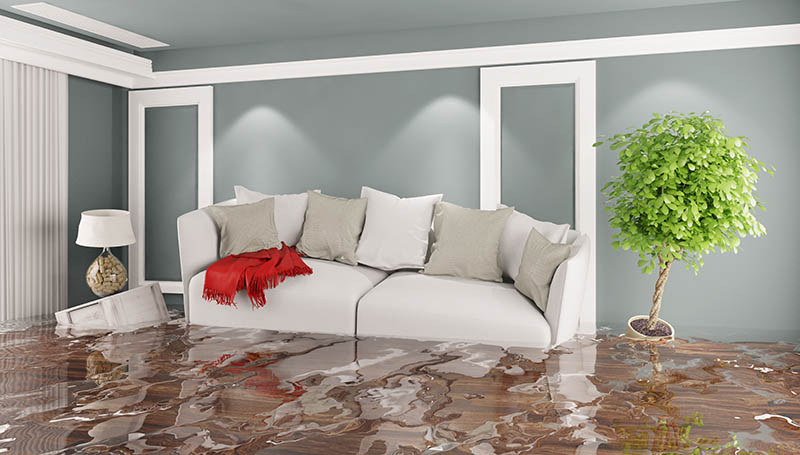Unveiling Major Sources Behind Home Water Leak Problems
Unveiling Major Sources Behind Home Water Leak Problems
Blog Article
Everyone has got their own assumption involving How to detect water leaks in your home.

Leakages not only trigger waste of water yet can additionally trigger unnecessary damage to your home and also advertise undesirable natural growth. By comprehending as well as looking for everyday circumstances that create leakages, you can secure your home from future leakages as well as unneeded damage.
Elbowing in origins
Most water leaks start outside the house rather than inside it. If you discover an abrupt reduction in water pressure, state in your faucet, take time to go out and examine your backyard. You may discover wet patches or sinkholes in your backyard, and that might mean that tree roots are getting into water lines triggering water to permeate out. You can have your plumber look for intrusion, specifically if you have trees or hedges near your property.
Rusty water systems
As time passes by, your plumbing system ages and also rust such as rust might start gnawing the pipes. This could be the source of staining or warping on your water pipes. This asks for an assessment with your plumber immediately. Take into consideration replacing the pipelines considering that they are at a greater danger of deterioration than the more recent versions if our plumbing system is old.
Malfunctioning Pipeline Joints
Pipeline joints can weaken over time, resulting in water leaks. If you have loud pipes that make ticking or banging sounds, especially when the warm water is turned on, your pipeline joints are possibly under a whole lot of stress.
Immediate temperature adjustments.
Severe temperature changes in our pipelines can cause them to expand and get suddenly. This growth and also contraction might trigger fractures in the pipes, particularly if the temperature level are listed below cold.
Poor Water Connectors
At times, a leakage can be brought on by loose pipes and also pipes that provide your appliances. More often than not, shifting is what triggers the loose water Links. You might discover in the case of a washing maker, a hose pipe might spring a leak due to trembling during the spin cycle. In case of a water links leakage, you might notice water running directly from the supply line or pools around your appliances.
Clogged Drains
Clogged drains pipes may be irritating and inconveniencing, yet they can often end up creating an overflow causing rupture pipelines. Keep getting rid of any type of products that may decrease your drains pipes that can obstruct them to stay clear of such troubles.
All the above are sources of leakages but not all water leakages result from plumbing leaks; some leakages may originate from roofing system leaks. All leaks ought to be fixed right away to avoid water damages.
Leakages not only trigger waste of water yet can additionally create unneeded damages to your home and promote undesirable organic growth. By looking and also understanding for day-to-day circumstances that cause leakages, you can secure your home from future leakages and unneeded damage. Today, we will look at 6 leak triggers that might be triggering your pipelines to drip.
At times, a leakage can be caused by loose pipes and pipes that supply your devices. In case of a water connections leak, you might see water running directly from the supply line or puddles around your home appliances.
How To Check For Water Leak In Your Home
How To Check for Leaks
The average household's leaks can account for nearly 10,000 gallons of water wasted every year and ten percent of homes have leaks that waste 90 gallons or more per day. Common types of leaks found in the home are worn toilet flappers, dripping faucets, and other leaking valves. These types of leaks are often easy to fix, requiring only a few tools and hardware that can pay for themselves in water savings. Fixing easily corrected household water leaks can save homeowners about 10 percent on their water bills.
To check for leaks in your home, you first need to determine whether you're wasting water and then identify the source of the leak. Here are some tips for finding leaks:
Take a look at your water usage during a colder month, such as January or February. If a family of four exceeds 12,000 gallons per month, there are serious leaks.
Check your water meter before and after a two-hour period when no water is being used. If the meter changes at all, you probably have a leak.
Identify toilet leaks by placing a drop of food coloring in the toilet tank. If any color shows up in the bowl after 10 minutes, you have a leak. (Be sure to flush immediately after the experiment to avoid staining the tank.)
Examine faucet gaskets and pipe fittings for any water on the outside of the pipe to check for surface leaks.
Undetected water leaks can happen without the home or business owner even realizing. If you suspect a water leak, but not able to find the source. It is time to contact a professional water leak detection service, The Leak Doctor.
How To Find a Water Leak In Your Home
https://www.leakdoctor.com/blog/How-To-Check-For-Water-Leak-In-Your-Home_AE197.html

As an avid person who reads about Top Causes of Home Water Leaks, I think sharing that portion was worthwhile. Enjoyed our write up? Please share it. Help other people check it out. Thank you for your time. Please come visit our site back soon.
Secure fix? Ring! Report this page